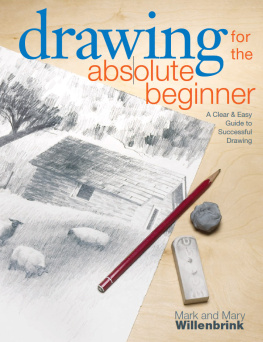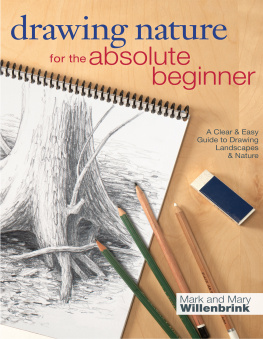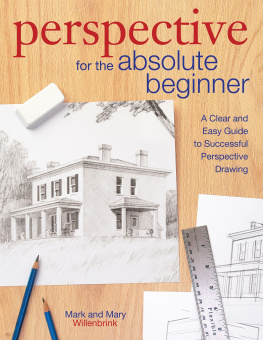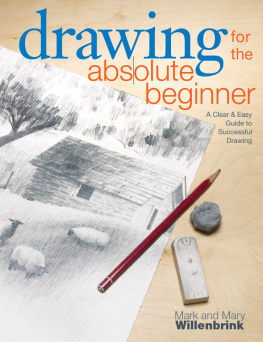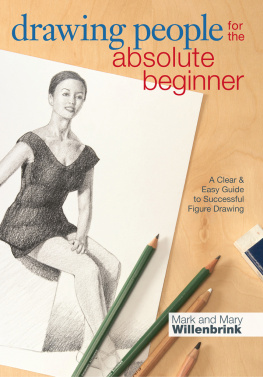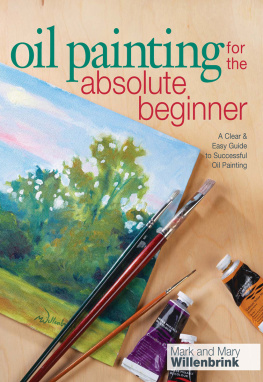Contents
DRAWING FOR THE ABSOLUTE BEGINNER:
Techniques
MARK & MARY WILLENBRINK
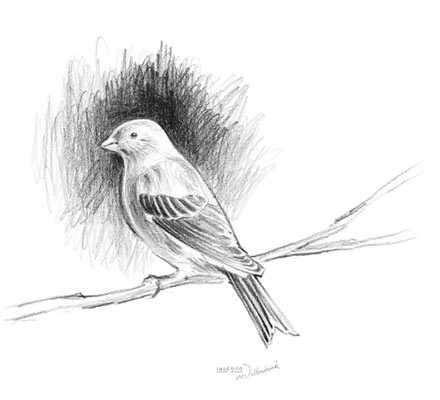
About the Authors

Mark Willenbrink is a freelance illustrator and fine artist whose work has been displayed in fine art shows, with several paintings receiving awards. Mark also teaches art classes and workshops using demonstration, simple instructions and professional tricks to help his students achieve beautiful artwork they can be proud to display.
Mary Willenbrink has her masters degree. She is a Christian counselor and author, but feels her highest calling is to be home to raise her children.
As a husband and wife team, Mark and Mary have authored and illustrated Watercolor for the Absolute Beginner (North Light, 2003), and the book has been translated into several languages. Marks writings and illustrations have been featured in a number of other art instruction books. Mark is a contributing editor for Watercolor Magic Magazine. His regularly featured column, Brush Basics has been rated as a favorite among the magazines readers.
Mark and Mary reside in Cincinnati, Ohio, with their three children.
Values
Values are the degrees of light and darkness in a drawing. They give additional form and depth to a basic structure. Observing the wide range of values that make up your subject will give you a better understanding of how light creates highlights and shadows on the form.
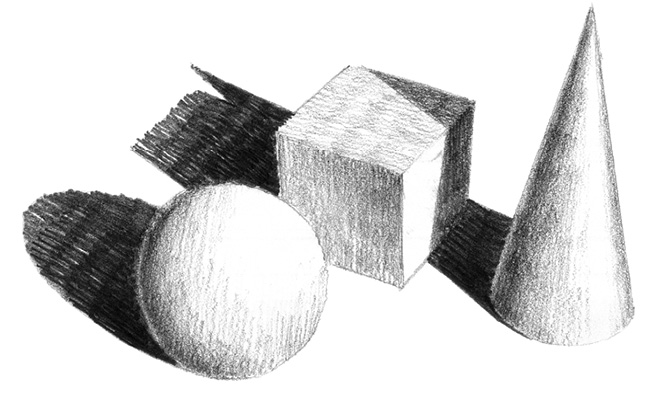
Observing Values Exercise
Take white foam shapes from your local craft store, set them up with a good light source, then observe the characteristics of the shapes, the highlights and how the shadows fall. Notice the wide range of values. You may need to paint the foam white to get an opaque surface that reflects light smoothly and accurately. Be sure to use latex paint, because spray enamel will melt Styrofoam.
Contrast
Differing values create contrasts that can affect the mood and composition of a drawing. The more extreme the difference between values, the greater the contrast. One way to achieve higher contrast in your drawing is to place your darks and lights side by side.

Its All Relative
Value contrasts are relative. They appear differently according to their environment. The small square on the far left may appear darker than the small square on the near left, but both are the same value. The square on the left appears darker because it is placed directly against the pure white of the paper, providing more contrast.
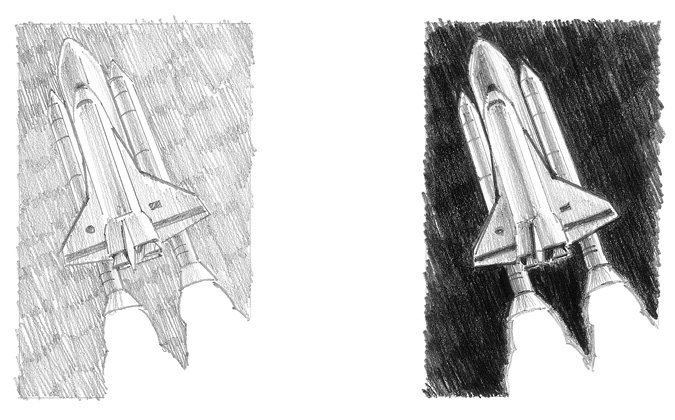
Value Contrast Creates Impact
A drawing done without much contrast will not have much impact and will look flat and pale. The white smoke of the rocket on the right looks brighter against the dark background. The drawing on the right uses richer values, creating more contrast.
Making a Value Scale: Mini Demonstration
You can use a value scale to compare the values of a scene with that of a drawing. Hold the value scale up to the subject and look through the holes punched along the side. Where do the values in the subject fall on the value scale? As you begin to compose a drawing, it is always best to establish the highlights and very light areas. Sketch those in, then look for where the other values are in the subject. To fill in the other values, one option is to go from the lightest shades of the drawing to the darkest. Another way to map out the values is to fill in some of the darkest areas around the lightest areas, then work with the midtones last. Try each of these methods to see which one works best for you.
Must Have Materials
- 4H, HB, 4B graphite pencils
- 4" 8" (10cm 20cm) drawing paper
- Kneaded eraser
- Hole punch
- Scissors
- Ruler
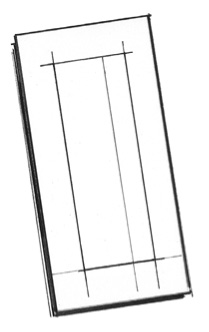
STEP 1 Draw a Rectangle
Draw a 2" 6" (5cm 15cm) rectangle on a 4" 8" (10cm 20cm) piece of drawing paper. Add a line down the middle right of the rectangle as a guideline for the holes you will punch out in the last step.
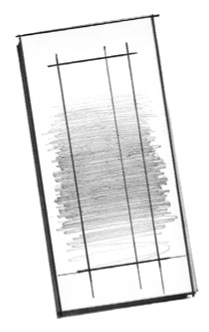
STEP 2 Create the Lighter Values
Keeping the top white, use a 4H pencil to create the lighter values with back-and-forth strokes.
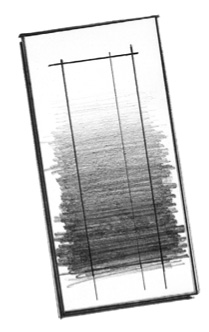
STEP 3 Add the Middle Values
Add the middle values with an HB pencil.
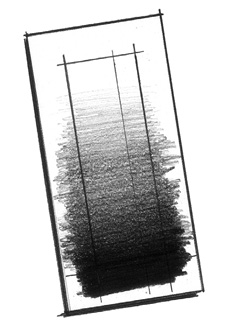
STEP 4 Add the Darkest Values
Use a 4B pencil for the darkest values. With scissors, trim around the rectangle pattern you drew, and punch seven holes along one side with a hole punch.
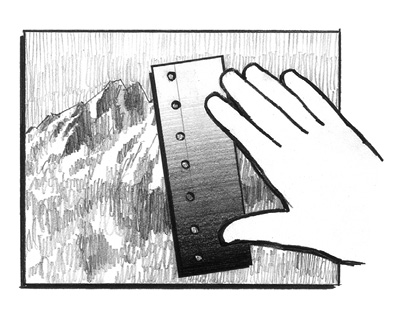
STEP 5 Map Out the Value Variations in Your Reference Photos
Now you can hold your scale up to a picture or scene to judge the values as you work on your drawings.
Creating Values
When you draw, you use lines to suggest light and dark values. The grade of pencil, the sharpness of its point, the angle of the point on the paper, the amount of pressure applied to the pencil, and the surface of the paper all influence the values you create. Even the pencil strokes you use influence the values you create on the paper.
Often type of stroke and the direction of the lines is determined by the subject. When drawing wood, the pencil lines will follow the direction of the grain; when drawing a cat, the direction of the pencil lines will follow the contours of its body.
Different Folks Make Different Strokes
If you are right handed, it is natural for you to make lines moving from the upper right to the lower left. But lines may go any direction you like, depending on what is comfortable for you and the effect you want to achieve.

Making the Grade
Here are some basic lines strokes created with different pencil grades. Hard pencils are good for sharp, crisp line work, and they keep their points longer than soft pencils. Soft-grade pencils can make smooth, dark values. Consider duplicating these pencil strokes as an exercise, then get creative and invent other textures.


